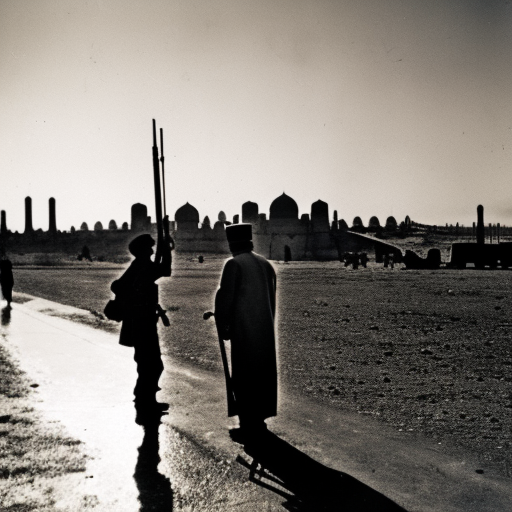Summary:
The Urartu-Assyria War was a series of conflicts between the ancient kingdoms of Urartu and Assyria in the 9th and 8th centuries BCE. These wars were characterized by territorial disputes, power struggles, and attempts to control trade routes in the region. The conflict ultimately resulted in the decline and eventual collapse of the Urartian kingdom.
Background:
Urartu, also known as the Kingdom of Van, was located in the mountainous region of eastern Anatolia, encompassing parts of modern-day Turkey, Armenia, and Iran. Assyria, on the other hand, was a powerful empire centered in Mesopotamia, with its capital in Nineveh. Both kingdoms sought to expand their territories and exert control over the lucrative trade routes that passed through their lands.
First Conflict:
The first major conflict between Urartu and Assyria occurred in the late 9th century BCE. The Urartians, under the leadership of King Sarduri II, launched an invasion into Assyrian territory, capturing several cities and establishing control over the region. However, the Assyrians, led by King Ashurnasirpal II, launched a counteroffensive and successfully pushed the Urartians back, reclaiming their lost territories.
Second Conflict:
The second phase of the Urartu-Assyria War took place in the early 8th century BCE. This time, it was the Assyrians who initiated the conflict, seeking to weaken the Urartians and expand their own influence. King Tiglath-Pileser III of Assyria launched a series of military campaigns, capturing Urartian territories and besieging the capital city of Tushpa (modern-day Van). Despite initial successes, the Assyrians were unable to fully conquer Urartu, and the war ended in a stalemate.
Third Conflict and Decline of Urartu:
The final phase of the Urartu-Assyria War occurred in the mid-8th century BCE. The Assyrians, under the rule of King Sargon II, launched another invasion into Urartian territory. This time, they were able to capture Tushpa and other major cities, effectively ending Urartu’s independence. The Urartian kingdom was subsequently incorporated into the Assyrian Empire as a vassal state.
Legacy:
The Urartu-Assyria War had significant implications for both kingdoms. For Urartu, the conflict marked the beginning of its decline. The loss of territory and resources weakened the kingdom, and it eventually fell into obscurity. Assyria, on the other hand, emerged as the dominant power in the region. The conquest of Urartu solidified Assyria’s control over the trade routes and expanded its empire. However, the Assyrians’ expansionist policies eventually led to their downfall, as they faced numerous rebellions and external invasions in the following centuries.
Conclusion:
The Urartu-Assyria War was a series of conflicts that shaped the political landscape of the ancient Near East in the 9th and 8th centuries BCE. The war was characterized by territorial disputes, power struggles, and attempts to control trade routes. While Assyria emerged as the victor and expanded its empire, Urartu suffered significant losses and eventually disappeared from the historical record. The war’s legacy highlights the complex dynamics of power and conquest in the ancient world.












